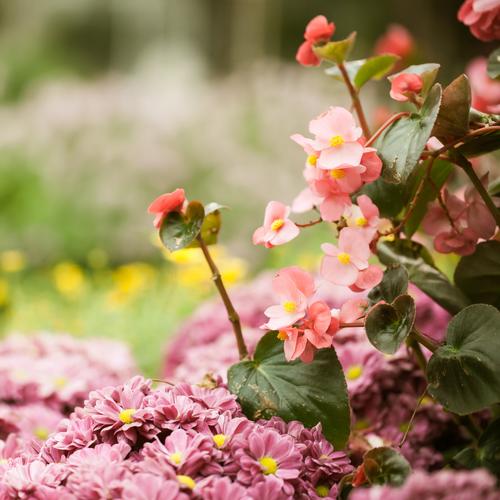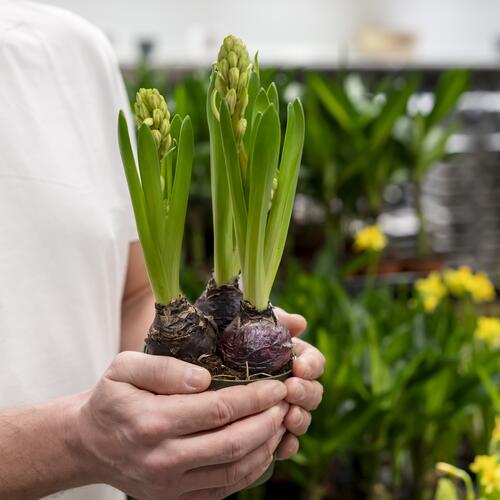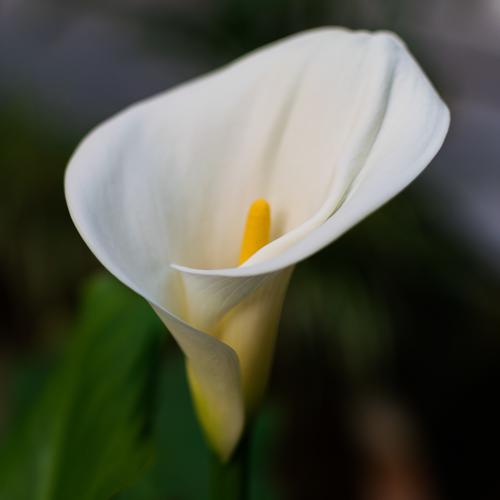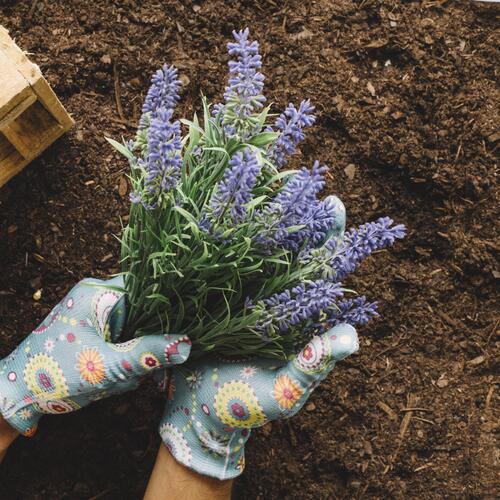Bulbs to Plant in March for Summer
Bulbs to Plant in March for Summer

Why You Should Plant in March
March is considered a good time to plant for the summer for several reasons:
Warmer Soil Temperatures: By March, the soil begins to warm up after the colder winter months. Warmer soil temperatures promote seed germination and root growth, allowing plants to establish themselves before the heat of summer arrives.
Extended Daylight: As the days become longer in March, plants receive more sunlight, providing them with the energy they need for growth and development.
Milder Weather: In many regions, March marks the transition from winter to spring, bringing milder temperatures and more stable weather conditions. This favourable weather allows plants to grow without the stress of extreme cold or heat.
Ample Rainfall: In some areas, March can be a wetter month, providing sufficient moisture for newly planted seeds and seedlings to establish themselves. Adequate moisture is essential for healthy plant growth.
Optimal Growing Conditions: Planting in March allows plants to take advantage of the optimal growing conditions of spring, including moderate temperatures and ample sunlight. This helps them develop strong root systems and foliage before the hotter and drier conditions of summer.
Longer Growing Season: Planting early in the spring extends the growing season, giving plants more time to mature and produce flowers or fruits before the onset of autumn.
Overall, March offers favourable conditions for planting, enabling gardeners to get a head start on their summer gardens and maximize their chances of success. However, it's essential to consider the specific climate and conditions of your region and choose plants that are suitable for planting at this time of year.

What Are Plant Bulbs
Flower bulbs are underground storage organs of flowering plants. They consist of layers of fleshy scales or modified leaves surrounding an embryonic plant within. Bulbs serve as a reserve of nutrients for the plant, allowing it to survive adverse conditions such as drought or cold weather. Examples of plants that grow from bulbs include tulips, daffodils, lilies, and hyacinths.
Bulbs come in various shapes and sizes, and they have different requirements for planting depth, spacing, and care. Some bulbs, like tulips and daffodils, are planted in the fall for spring blooms, while others, such as dahlias and gladiolus, are planted in the spring for summer blooms.

What Bulbs to Plant
Planting bulbs in March for summer blooms is a great way to add colour and vibrancy to your garden. Here are some bulbs you can plant in March for summer blooms:
Dahlias: Dahlias are stunning flowering plants that produce large, showy blooms in a wide range of colours. Plant dahlia tubers in well-drained soil and in a sunny location for best results.
Gladiolus: Gladiolus bulbs produce tall spikes of flowers in various colours. Plant gladiolus corms in well-drained soil and space them apart to allow for good air circulation.
Lilies: Many varieties of lilies bloom in summer, including Asiatic lilies, Oriental lilies, and Trumpet lilies. Plant lily bulbs in well-drained soil and in a location that receives partial to full sunlight.
Cannas: Cannas produce tropical-looking foliage and vibrant flowers in shades of red, orange, yellow, and pink. Plant canna rhizomes in well-drained soil and in a sunny location for best growth.
Calla lilies: Calla lilies are elegant flowering plants with trumpet-shaped blooms. Plant calla lily rhizomes in well-drained soil and in a location that receives partial sunlight.
Crocosmia: Crocosmia bulbs produce arching stems of brightly coloured flowers in shades of red, orange, and yellow. Plant crocosmia bulbs in well-drained soil and in a sunny location for best results.
Acidanthera: Also known as Abyssinian gladiolus or fragrant gladiolus, Acidanthera produces fragrant white flowers with dark purple centres. Plant Acidanthera bulbs in well-drained soil and in a location that receives full sunlight.
Remember to follow the planting instructions specific to each type of bulb for optimal growth and blooming. Additionally, ensure that the soil is well-prepared and amended with organic matter to provide nutrients for the bulbs.

How to Plant Bulbs
Planting flower bulbs is a straightforward process that can yield beautiful blooms with proper care. Here's a step-by-step guide on how to plant flower bulbs:
Choose the Right Location: Select a location in your garden that receives the appropriate amount of sunlight for the specific type of bulbs you are planting. Most bulbs prefer full sun to partial shade.
Prepare the Soil: Ensure the soil is well-drained and loose. Remove any weeds, rocks, or debris from the planting area. You can also amend the soil with compost or organic matter to improve its fertility and drainage.
Dig the Holes: Use a garden trowel or bulb planter to dig holes for your bulbs. The depth and spacing will vary depending on the type of bulb you are planting, so refer to the planting instructions provided with the bulbs. As a general rule of thumb, bulbs are typically planted at a depth that is two to three times their diameter.
Plant the Bulbs: Place each bulb in the hole with the pointed end facing up (this is where the shoots will emerge). Make sure the bulbs are positioned at the correct depth and spacing according to the planting instructions.
Backfill the Holes: Gently fill in the holes with soil, covering the bulbs completely. Press down lightly on the soil to remove any air pockets and ensure good soil-to-bulb contact.
Water Thoroughly: After planting, water the area thoroughly to settle the soil and provide moisture to the bulbs. Avoid overwatering, as this can lead to rotting.
Mulch (Optional): Applying a layer of mulch over the planting area can help conserve moisture, suppress weeds, and regulate soil temperature. However, make sure the mulch layer is not too thick, as it can hinder bulb emergence.
Label the Planting Area (Optional): If you're planting multiple types of bulbs or different varieties, it can be helpful to label the planting area so you remember what you planted where.
Monitor and Care: Keep an eye on your planted bulbs as they grow. Water them regularly, especially during dry spells, and protect them from pests and diseases as needed. Follow any specific care instructions provided for the type of bulbs you've planted. Also, consider laying Weed Fabric at the base layer for extra protection.
By following these steps and providing proper care, you can enjoy colourful blooms from your flower bulbs when they come into season.

